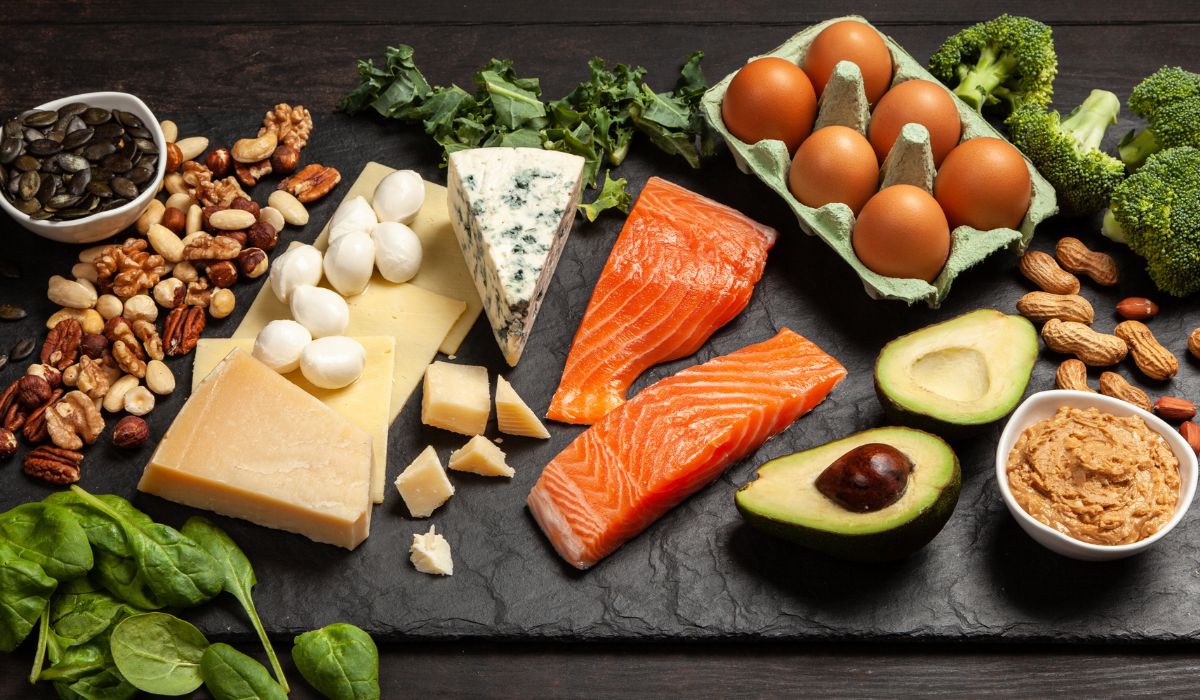
“Carbs fuel your workouts”
“Athletes need carbs for fuel!”
We’ve all heard some variation of this claim, and it’s actually based on a lot of truth. Here’s the story behind the “athletes need carbs” line: your muscles store carbs in the form of glycogen. When you do something (swim, bike, run, lift, jump), you burn both stored glycogen and stored body fat for fuel. The higher the intensity of your activity, the greater proportion of your calorie burn will come from carbs. When your muscles burn through all the stored glycogen they have available, they have to switch to fat exclusively. In endurance exercise, this is called “bonking” or “hitting the wall.”
For most people, this is not fun. They’re basically getting all the crumminess of switching from a high-carb diet to a keto diet, coming on super suddenly, all at once, at mile 20 of a marathon. That’s why so many athletes rely on carb-dense sports drinks or sugary chews. Anything to avoid the wall!
But consider: what if you didn’t start out dependent on stored glycogen in the first place? What if you’d already gone through that painful moment of transition to a fat-dominant metabolic state and come out the other side? Luckily, it doesn’t involve perma-bonking for the rest of your life. Eating keto actually helps make you more bonk-resistant, because your body is well-adapted to run on fat in the first place.
Take a look at some of the research showing that keto is a safe and effective diet for both strength training and aerobic exercise/cardio.
Keto and Strength Training
To kick off the research parade, let’s take a look at studies on keto for strength training and muscle-building - that’s powerlifting, olympic lifting, strongman, and anything similar.
In this study, researchers studied 21 overweight volunteers for 8 weeks. They fed them either a low-calorie diet or a keto diet and also had them start strength training. Both groups gained about the same amount of strength, while losing about the same amount of weight. They concluded that a keto diet isn’t some amazing magic for strength training, but it also doesn’t hurt at all, at least during weight loss. This study reported similar results during 8 weeks of resistance training
One argument about keto and strength training is that it’s really just the protein. Even though keto isn’t a high-protein diet (it’s a high-FAT diet with adequate protein), when people start eating keto, they often start getting a lot more high-quality animal protein than they were before. High-quality protein is completely essential for muscle growth. But this study tested two diets with the same protein content - one high-carb and the other keto. The subjects were 25 young men who each ate one of the two diets for 10 weeks while doing resistance training. The keto dieters had a greater increase in lean body mass (muscle) and a greater decrease in fat. So it’s more than just protein - keto in general is a good diet for strength training.
Interestingly, the keto group in this trial also got a big testosterone bump, which is unsurprising considering what we know about dietary fat and testosterone.
Ultimately, the available evidence points to keto as a perfectly fine diet for strength training. It might be better than a typical diet, at least in some people, and it probably won’t hurt.
Keto and Aerobic Exercise (Cardio)
Now for the aerobic crowd: runners, cyclists, swimmers, triathletes, elliptical machine devotees, and anyone else with a love of regular cardio. Most of the research shows that keto is as good for aerobic performance as any other diet. There’s a 2-week (approximately) adaptation period, but after that, keto doesn’t significantly harm performance.

Just like for strength training, there’s a bit of a research deficit here, but there are a few studies in humans:
Here the researchers collected 12 healthy and physically active men and women and had them eat a keto diet for 35-50 days. In the end, the subjects ran just as well on keto as they did on their previous diet, and the researchers concluded that “The drastically reduced carbohydrate content of the diet seems to be no limiting factor for running performance.”
This study gave people a keto diet for 6 weeks. The researchers identified a “mildly negative impact” on physical performance for aerobic training, but concluded that it wasn’t “clinically relevant” (aka noticeable in the real world) except in professional athletes.
There are even some studies suggesting that keto improves performance. In 5 trained cyclists, a low-carb diet (70% fat, 7% carb, 13% protein) increased the amount of time the cyclists could bike before they were exhausted, relative to a high-carb diet. The low-carb dieters had lower muscle glycogen reserves but were much better at using fat for fuel, so it didn’t impair their performance.
Again, keto seems to be more or less equivalent to a typical carb-based diet, after the adaptation period is over. Expect a couple weeks where training is a little rough, but after that, there’s no evidence that people can’t do endurance exercise on keto.
Limitations of the Studies
Keto hasn’t been studied all that much in healthy adults. There aren’t a huge number of studies, and most of them are:
- Pretty short
- In relatively few people
- In people who might not represent you. (For example, if you’re 58 and female, that study on college-age men might not be super helpful for predicting how your body will respond to something).
It’s perfectly possible that something unique about your body or the type of exercise you like to do could make keto the wrong diet for your workout program. You might do better with some specific changes either to your diet or to your exercise routine - this is a pretty young area of research and it’s worth remembering that studies with 8 or 12 research subjects really have a lot of limitations when it comes to representing humans in general.
Optimizing Keto for Great Workouts

To touch on just a few tweaks that you can use to optimize keto for athletic performance:
Electrolytes: electrolytes (sodium, potassium, and magnesium) are important for anyone doing keto, but they’re particularly critical if you’re sweating. You can read more about keto and electrolytes here.
Carb modifications: if strict keto doesn’t work for you, you might consider doing occasional re-feeds or eating high-carb meals at strategic times. Some research suggests that this might be helpful. For example, this study was done in 29 elite race walkers (yes, race walking is an actual sport). The researchers found that keto impaired performance, but that alternating high-carb training days and low-carb rest days didn’t. This is called periodized nutrition and it might be a good strategy for people who want the weight-loss benefits of keto but prefer some carbs for their workout fuel.
Keto and Exercise: Two Great Tastes that Go Great Together
Basically, the research shows that keto is a perfectly fine diet for exercise - it’s not dangerous to work out on keto, and a low-carb nutritional approach might even be helpful. If you’re thinking of starting a workout routine, or if you want to keep up one you already have, keto shouldn’t get in the way.





Leave a Reply